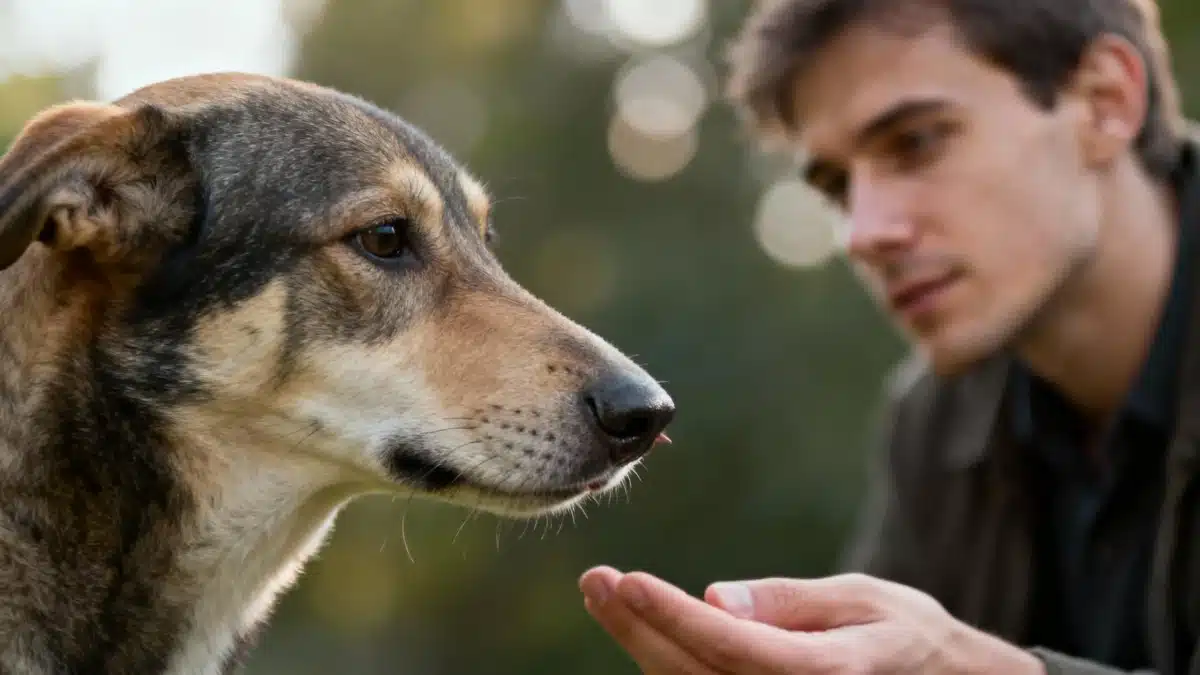Ever seen a dog glare suspiciously at someone for apparently no reason, growling as if channeling Sherlock Holmes with a wet nose? You’re not alone. Sometimes, our four-legged family members act out toward people with zero warning—and if their humans are baffled, what hope is there for the rest of us? The answer, it turns out, lies in the remarkable science of canine instincts, with a sense of smell—and sixth sense—that would make even superheroes jealous.
When a Dog Knows: The Bizarre Case That Got Scientists Sniffing Around
Ask any dog owner, and they’ll admit—sometimes their pups act like fur-coated lie detectors. There’s one story, reported by Discover, that takes this to a new level. Picture this: a 12-year-old boy, his friendly dog, and a smiling neighbor approaching their front door. Nothing suspicious there, right? But when this cheerful man came close, the dog went ballistic, barking and agitating so intensely that the neighbor had to beat a hasty retreat behind the door and finally leave the property altogether.
At first, everyone chalked it up to, well, dog weirdness. After all, sometimes there’s no obvious explanation—and even the best pet parents are left scratching their heads. But the real shocker came weeks later: the same neighbor was arrested and charged with ten counts of child assault. Suddenly, the dog’s hysteria made all-too-chilling sense. Somehow, the canine had picked up on something “off” long before any humans could.
The Secrets in Their Snouts
Why do dogs sometimes instantly dislike or even react defensively to specific people? Scientists are finally starting to uncover the mystery, and yes—it’s in the nose. Compared to our measly 5 or 6 million olfactory receptors, the average dog boasts a whopping 220 million (some lucky breeds even hit 300 million). That’s 36 times more sniffing power than the best of us mere mortals. And it’s not just quantity: with their impressive olfactory bulb, which hogs about 10% of their brain (according to MRI studies), dogs can catch scents up to 50 times less concentrated than what humans can detect.
This means dogs are not just detecting smells—we’re talking about a supercharged analytics engine. Every whiff gets recorded, categorized, and stored. Their noses can give context to what they pick up, letting them associate certain scents with specific people, emotions, or events. It’s the canine equivalent of having Google, but for smells. Trust a dog to remind you if you had pepperoni pizza three days ago.
Connecting Dots with Doggie Memories (and Pizza)
If that still sounds like magic, animal behaviorists are on the case with down-to-earth observations. Take one study: a specialist observed dogs greeting groups of visitors. Some guests got chomped more than others—but initially, there were no obvious differences between these people. The true link, as it turned out? They had all eaten pizza a few hours before. The twist in the crust: a pizza delivery guy had once kicked a puppy, causing a deep, negative association in that particular dog’s sharp nose and sharper memory. Defensiveness and aggression were suddenly not so random after all.
- Dog brains connect certain smells with past incidents.
- Just one negative episode can cause lifelong associations.
- It’s not always about the person—sometimes, it’s lunch.
Fear, Chemistry, and the Scent of Emotion
But it isn’t just pizza and childhood trauma that get logged in a canine’s olfactory database. Dogs can sniff out our emotional states, too, thanks to a keen sensitivity to hormones and body chemicals like adrenaline, sweat, and other secret signals. When we’re afraid, anxious, or just finished an intense spin class, dogs can pick up on the change, sometimes reacting to things they associate with stress or fear.
In a 2018 study with labradors and golden retrievers, scientists showed that dogs exposed to the scent of human fear—yes, fear stinks—began to display their own signs of stress. This isn’t just empathy; it’s a chemical language few humans realize we’re broadcasting.
And it doesn’t stop there. Other studies show dogs can offer comfort to people suffering from post-traumatic stress disorder, responding intuitively to invisible emotional cues. Sometimes, the best therapist has a wagging tail.
The next time your dog bristles at a stranger or mysteriously adores your new date, remember: that instinct is backed by an incredibly sensitive, information-packed schnoz and centuries of evolution doing detective work. Trust your pup—they might just know something your nose (and your gut) haven’t figured out yet.

John is a curious mind who loves to write about diverse topics. Passionate about sharing his thoughts and perspectives, he enjoys sparking conversations and encouraging discovery. For him, every subject is an invitation to discuss and learn.





